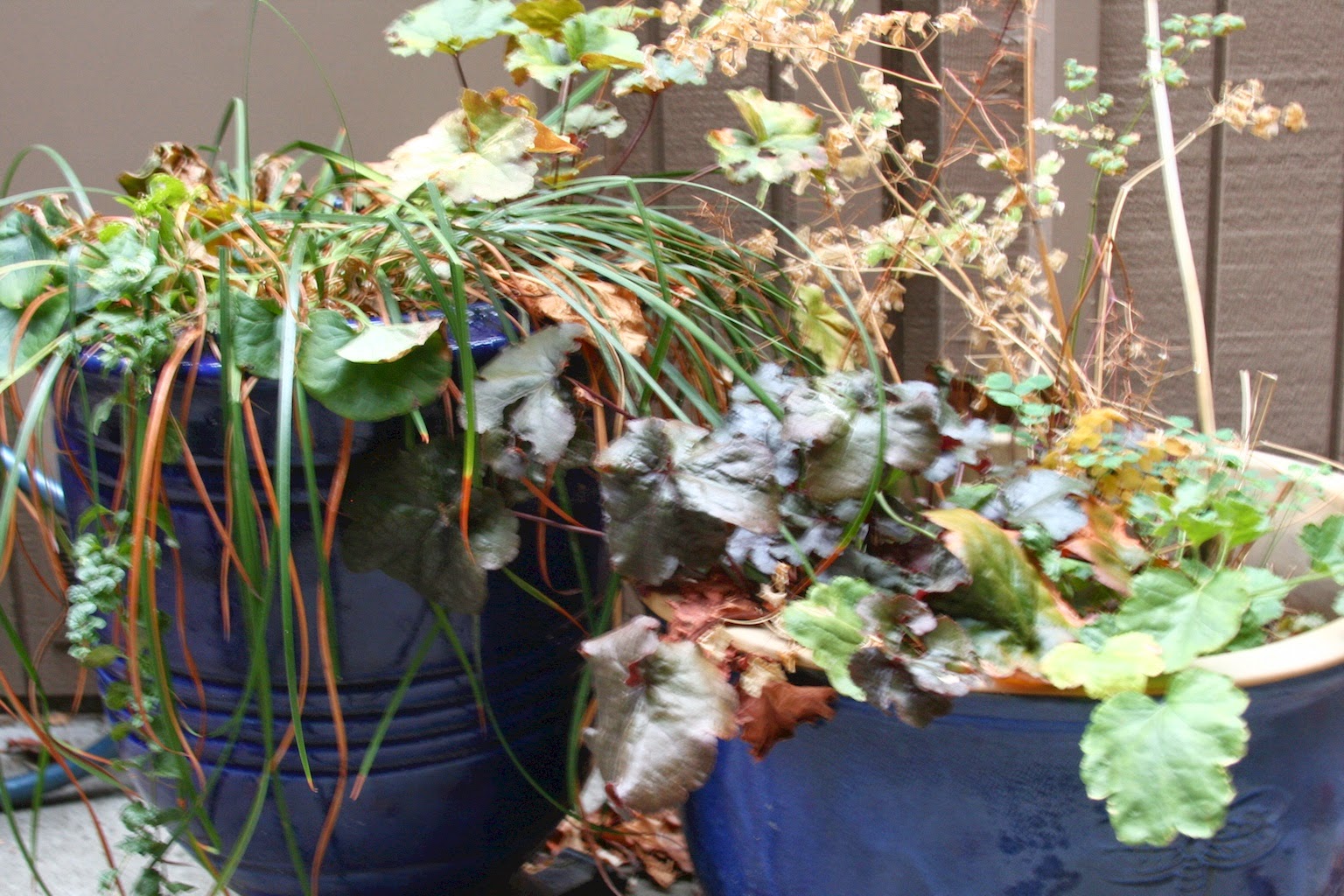All things considered, the garden this fall is quite attractive. Shown above, Erigoneum arborescens in the foreground, Arctostaphylos pajaroensis in the mid-distance on the right and the strong green toyon in the distance on the left offer both enough green and enough variety. Several of my neighbors have taken a different solution to the drought:
This is, of course, quite acceptable. But I'm worried that they'll just put in more turf when the rains start in the fall. Regardless, let's go on a little tour and see what's doing OK after a rather dry winter and a rather warm summer.
The front garden from the other side shows some signs of wear. the Salvia leucophylla (purple sage) did not bloom much but the greyish foliage with the many fine hairs allows it to survive. Regrettably the coyote brush (baccharis, much praised in Ms. Country Mouse's last post) looks terrible this year. No blossoms here (male or female), let's hope that cutting it to the ground will revive it. More in the background, some succulents are doing quite well, while the monkey flower is looking brown and unhappy, but that's how it looks in early fall.
As for the containers along the walkway to the back garden, the less said, the better. I watered these babies twice a week, but it's been too sunny and warm. Come fall, I'll take everything out, save what can be saved, and start fresh. Something to look forward to!
A happier sight as we turn the corner. California fuchsia is not blooming quite as spectacularly as some years, but is putting on a pretty good show! And ribes and some Heuchera in the background have done fine with some water and a lot of shade.
Turning toward the hammock, we see more green in the background: Acrtostaphylos hookeri 'Wayside' has done very well with almost no water in part shade, and in the background a coffee berry and two California snowdrop bush (Styrax Californica) are looking lush an green. Asclepias speciosa, behind the brownish grass on the left, is still looking pretty good with very minimual water. It's the cure against the fussy small leaf syndrom that California gardens can have, and I love the flowers and the large, odd seedheads.
Location, location! has been this summer's mantra. Festuca californica in the background in part sun looks half dead, while the same plant in more shade in the foreground is doing quite nicely.
Then again, the redwood habitat is a bit of a depressing sight. The ginger is barely hanging in there, while the redwood sorrel has almost given up - and we'll see about that fern.
In contrast, California fuchsia and rosy buckwheat, and a sedom in the background, are doing very well indeed, to the delight of the hummingbirds and pollinators.
And, altogether, the garden has how a feeling of hope. The worst of the heat is over. The buckwheats will help the pollinators, and later feed the migrating birds with seed. Many plants - such as the Salvia clevlandii above -- are putting out just a few flowers to say: we're still here, and we're ready for some rain and a new beginning.










Comments
The fescue higlights the importance of location, location, location. Do you cut it back? If so, when?